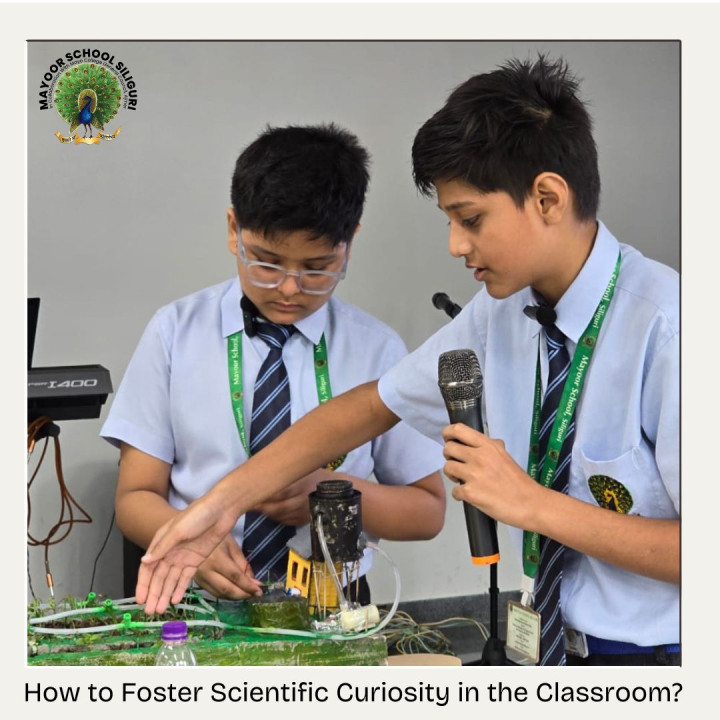
Scientific curiosity is the mother of discovery, innovation, and intellectual growth. From Galileo’s celestial observations to Rosalind Franklin’s X-ray diffraction images of DNA, every significant leap in science has been fueled by an insatiable curiosity about the unknown. Yet, in many traditional classroom settings, the rigid structure of curricula often stifles the very curiosity that drives scientific progress. How can educators rekindle this fundamental trait in students?
Encourage Inquiry-Based Learning
The renowned physicist Richard Feynman once said, "I would rather have questions that can’t be answered than answers that can’t be questioned." Inquiry-based learning (IBL) aligns with this philosophy by prioritizing students' questions over rote memorization. In an IBL setting, students actively investigate scientific phenomena, formulate hypotheses, and test their ideas through experiments.
The STAR Project The Student-Teacher Academic Research (STAR) project, implemented in various high schools, showed that students who engaged in self-led experiments demonstrated a 40% higher retention rate of scientific concepts compared to those who followed textbook-based instruction. By allowing students to explore scientific mysteries firsthand, curiosity was significantly amplified.
Integrate Real-World Problems
Students are more engaged when they see the relevance of science in addressing real-world challenges. Scientists such as Jane Goodall and Carl Sagan have emphasized the importance of making science relatable. As Sagan noted, "Somewhere, something incredible is waiting to be known." When students see how scientific principles apply to real-life problems, they develop an intrinsic desire to learn more.
The Flint Water Crisis and Chemistry Lessons
Incorporating case studies like the Flint Water Crisis into chemistry lessons has proven effective. When students analyzed water contamination data and proposed solutions, they not only learned about chemical reactions but also about social responsibility. This hands-on problem-solving approach led to a 60% increase in students' engagement in chemistry classes, as reported in a 2018 study by the National Science Teaching Association.
Promote a Growth Mindset in Science
Many students fear failure in science due to the misconception that intelligence is fixed. However, a growth mindset—believing that intelligence can be developed—has been shown to significantly enhance curiosity and persistence in scientific endeavors.
Carol Dweck’s Research on Growth Mindset
Carol Dweck’s research demonstrated that students who were encouraged to see mistakes as learning opportunities showed greater resilience and creativity in scientific problem-solving. In classrooms that implemented growth mindset interventions, students’ willingness to engage in scientific inquiry increased by 45%.
Provide Role Models and Mentors
Curiosity thrives when students see individuals who embody scientific exploration. The stories of scientists such as Marie Curie, Albert Einstein, and modern pioneers like Dr. Jennifer Doudna inspire students to view science as an adventurous pursuit.
The "Skype a Scientist" Program
Programs like "Skype a Scientist," which connect classrooms with real scientists, have led to a measurable increase in students' interest in STEM careers. After direct interactions with scientists, students reported a 35% greater inclination to pursue science-related fields.
Encourage Hands-On Experimentation
The physicist Ernest Rutherford famously stated, "We haven't got the money, so we've got to think." This sentiment underscores the importance of creativity in scientific discovery. Allowing students to conduct open-ended experiments fosters a sense of ownership over their learning and fuels curiosity.
The Maker Movement in Education
Schools that have integrated maker spaces, where students can tinker with robotics, electronics, and biology experiments have reported a dramatic increase in curiosity-driven learning. A study by the American Educational Research Association found that students involved in maker activities were 50% more likely to engage in independent scientific research projects.
Cultivate a Classroom Culture of "Why?"
Science begins with a question. Encouraging students to ask "why?" cultivates an environment where curiosity flourishes. Nobel Laureate Isidor Rabi attributed his success to his mother, who asked him daily, "Did you ask a good question today?"
In the classroom, teachers can model curiosity by expressing genuine enthusiasm when confronted with a new question. Encouraging students to challenge existing knowledge fosters a deeper understanding and engagement with scientific concepts.
Fostering scientific curiosity is not about dispensing knowledge; it is about igniting a passion for discovery. By implementing inquiry-based learning, connecting science to real-world problems, promoting a growth mindset, providing role models, encouraging experimentation, and nurturing a culture of questioning, educators can transform the classroom into a dynamic space for intellectual exploration.
At the best school in Siliguri, students are empowered to develop a deep love for science through hands-on experiences and innovative teaching methods. By fostering an environment where curiosity thrives, we prepare the next generation of scientists and thinkers to tackle the challenges of the future. As Albert Einstein aptly put it, "The important thing is not to stop questioning. Curiosity has its own reason for existing." Let us ensure that curiosity continues to thrive in young minds.
For more blogs, click here.